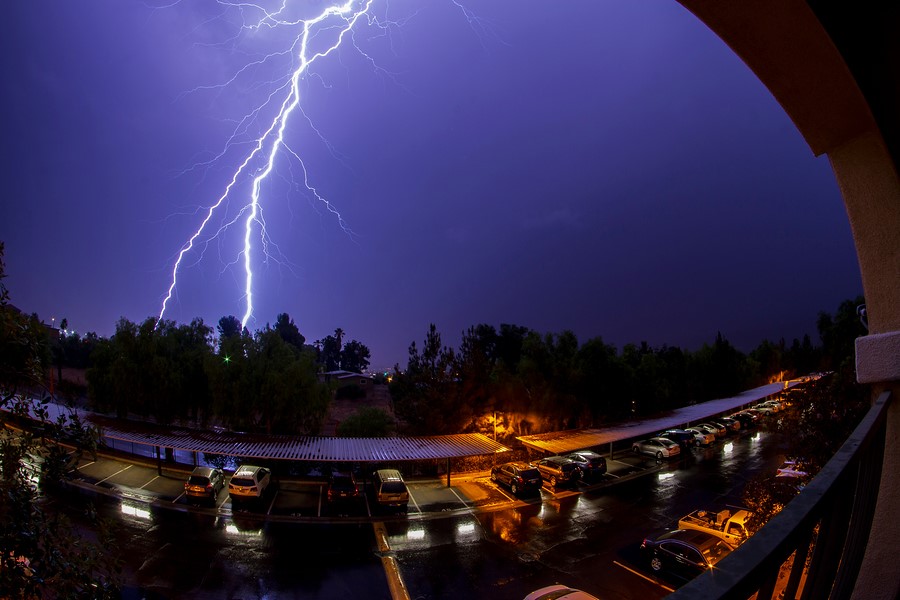Budget Season: Prepping for Spring

Many outdoor maintenance services are slowing down or stopping due to cold temperatures and winter being right around the corner, so now is the time to start budgeting for spring maintenance and repairs. If your board performed a property walk-through this summer, you’ll know what will need attention once the snow melts. If your roads, parking lots, or pathways weren’t in the best condition before fall came, they’ll only be worse when it warms up again. Due to the freeze-thaw effect, any cracks or potholes in the pavement will expand, causing further damage to the asphalt. Many paving companies honor 2021 pricing if your association signs now, but the work can’t be done until 2022. Proposals should also be requested for repairs to outdoor structures like fencing, decks, roofing, and siding. Winter storms may also damage structures that were in good shape before, so get in touch with a contractor immediately after to get it repaired in the spring. Big repairs aren’t the only type of maintenance that should be budgeted for—regular maintenance, such as lawn care, also requires your attention. Are you sticking with your current lawn mower contractor? Do you have a company doing landscaping and tree care, or is that also something you need for the spring? Anything that requires regular maintenance should be discussed. If budget is truly an issue for your HOA, prepare contracts for the most pressing repairs first. Review last year’s financial reports—are there other areas you can cut back in to allow for more money to go toward maintenance? When you’re budgeting this winter, don’t hesitate to reach out to Sharper Management for vendor referrals or any other questions!
Vendor Checklist

When selecting a vendor or contractor, it is critical to use due diligence and have a process in place for making these selections. By having a thorough process, you will satisfy your obligation as a board member while also protecting from potential liability. When evaluating vendors or contractors for selection, there are some key pointers to follow: Establish a thorough process for vendor “vetting.” Better yet, document the process for future boards to ensure consistency. Conduct personal interviews (or engage in some kind of personal contact). Confirm insurance coverage/documentation. Note that not all vendors need or have insurance, but this is an important aspect to take note of. Confirm any licensing, credentials, or certifications a vendor may have depending on its specific industry. Request multiple references and check them. Proposals are not contracts, even if all parties sign it. Always ask for a formal contract that includes important terms regarding the relationship (i.e. termination, dispute resolution). There are also special considerations for specific types of vendors and projects: Construction Projects Always get multiple bids to compare costs, operations, and qualifications. Ask for Certificate of Insurance and ensure that it is current and up to date through the anticipated length of a project. Check with the Minnesota Department of Labor and Industry to confirm license status, learn of potential enforcement action, or history. Follow up on any issues. Explore resources such as BBB, Angie’s List, Google reviews, and more. However, take all reviews with a grain of salt. Confirm contractor’s ability to complete project within your desired timeframe. Clarify methods of communication for project ahead of time. Management Companies Consider the amount of control you are relinquishing—full management? Partial? Ensure agreement covers what is expected in as much detail as possible, including things like termination options, governing documents, and auto-renew provisions. Have a thorough understanding of what services are included and what may require payment of additional fees. Understand the relationship between management and the Board and how it translates in terms of a contract. Routine/Ongoing Service Vendors Ensure there is a termination or dispute resolution process in place in the event there is an issue. Understand the schedule of services and what triggers action (i.e. inches of snowfall, days for garbage collection). As general rules of thumb, you can (and should) always negotiate a contract if there are concerns over the terms proposed. If multiple bidders are involved, allow for a process to give all bidders a fair chance at the project. Finally, make sure there is always a way to end the relationship if needed. At the end of the day, it is important to do your homework on the front end of the relationship to circumvent future issues. Do thorough research and check all available resources and negotiate for terms that you find acceptable. Luckily, Sharper Management offers a Preferred Vendor Directory. All preferred vendors are required to provide a certificate of insurance and be in good standing with the state of Minnesota. This can be a fantastic starting point in the vendor selection process: https://sharpermanagement.com/preferred-vendors/
Storm Safety and Your Association

As we get closer to storm season and the threat of damaging weather, it’s important to review your policies on exterior damage caused by natural events. Typically, the governing documents will dictate protocol for those situations and the role of the board vs. members. Most instances will require the board to be responsible for any storm damage on the exterior of the property (following the studs out rule) while the member’s own homeowner’s policy will cover any other damage on the interior (studs in). However, this can differ somewhat depending on how the units are constructed and the association laws-for example, an association with no shared walls or roof lines could outline a much different process that requires more resident responsibility. All board members should be aware of that policy anyone because you will most likely have residents asking about it as well. The insurance should ideally cover the type of damage that could occur during a severe storm such as hail damage, wind damage, loss of roofing, and trees falling on your property. The board should take care of the exterior damage, but if it does reach inside the unit, such as a hole in the roof causing water to get in, then the resident would be responsible for the water damage. Additionally, when going over the insurance policy, the timeline should also be checked. Most claims on storm damage have a deadline of 2 years, starting after the date of the event. If a severe storm does pass through or a resident mentions they can see damage from the ground, then an approved storm restoration expert should be brought in for an inspection. For the benefit of the residents, a reminder of good storm safety practices might be an ideal message to send out. Remind them of how your insurance policy covers storm damage, what that means for them, the recommended procedure to follow during a tornado event, and who they should contact if their unit does suffer storm damage. If the need for restoration of roofing or siding does occur, which requires time and construction, it’s important to keep the residents updated on the project schedule. Sometimes an early morning start is necessary to ensure timely completion, so a heads up will benefit the community. Explain that a little inconvenience, such as that early start or workers working around the property, is worth it in the long run to restore their exterior as quickly as possible.
Choosing Contractors for Your HOA

If the ground hog was right last month, Spring is just around the corner. With that comes warm-weather maintenance projects. When selecting vendors for your projects, keep some of these tips in mind: Hire Licensed, Bonded and Insured Vendors It should go without saying, but it is important to hire ONLY licensed, bonded and insured contractors. When vendors have these things in place, your HOA is protected in the event of property damage or injury. Remember to verify that vendors maintain workers’ compensation and general liability. Also, it’s good practice to have bidders clarify what portions of their proposed services will be subcontracted when they submit a proposal. If a subcontractor will perform work, they should be subject to the same requirements as the prime contractor. Bonding may not be necessary for all work, but requiring a bond is a good way of insuring that you are dealing with a reputable contractor. Written Vendor Contracts Having written contracts in place when hiring a vendor will help protect the HOA. A written agreement should contain the scope of work, the timeline in which work needs to be performed, price to be paid for the work, contract termination options, methods of payment, how breaches of the contract will be addressed, warranties, indemnification of the community association for any damages brought about by the vendor during the course of the work, and a clause that makes the vendor responsible for compliance with all regulatory entities. Develop a Clear Scope of Work The first step in establishing a regular service contract or in starting a project should be establishing a Scope of Work. The Scope of Work can be used as part of a Request for Proposal process and then can be incorporated into a contract that is awarded. A clear Scope of Work also allows the Board to effectively compare pricing based on apples-to-apples service. Vendor References Check with references before hiring a vendor. Look for their online reviews. Google and Yelp can tell the story before you even speak to a vendor. The Better Business Bureau will also have a clear rating of the contractor to help in making your decision. Competitive Bid Process Always get at least a comparison quote if not at least 3 quotes through a competitive bid process. This will guarantee the best deal for the association. If you have a full-service management agreement with Sharper Management, your community manager can help you with this process. Have a wonderful Spring season.
Construction Chat: The Spring Freeze Thaw Cycle

Soon the spring freeze/thaw cycle in Minnesota will mean things are on the move. Things you don’t want to move! Concrete heaves, asphalt buckles, retaining walls shift and bricks crack. The expansion/contraction process caused by ice/snow melting during the day, and then re-freezing at night, can put a tremendous amount of pressure on surfaces and structures. There are a number of factors that contribute to the freeze/thaw cycle. Many are uncontrollable. Temperatures and melting are out of our hands. Soil conditions play a part; however, it is hard to change the natural soil content of the development. Grading/soil prep at construction are a factor; but again, it’s hard to do anything after the fact. What you can review and correct, however, is drainage patterns that bring the water to these areas and surfaces. This is the ideal time of the year to assess some common contributing scenarios: Do rooflines drop water directly onto front stoops and sidewalks? Do downspouts push water into retaining walls or landscape beds? Do downspout extensions go out far enough from the building? Are there grading issues allowing water to pool on patios or sidewalks? Is curbing along the streets level, allowing water to flow to catch basins? Are there significant cracks and holes in asphalt allowing water to pool inside? You are never going to solve all drainage problems. Nor can you eliminate the freeze/thaw cycle. But being proactive by reviewing drainage, and sometimes getting a little creative to redirect it, can save money on asphalt, concrete and other construction repairs. Now is the time to spring into action!
